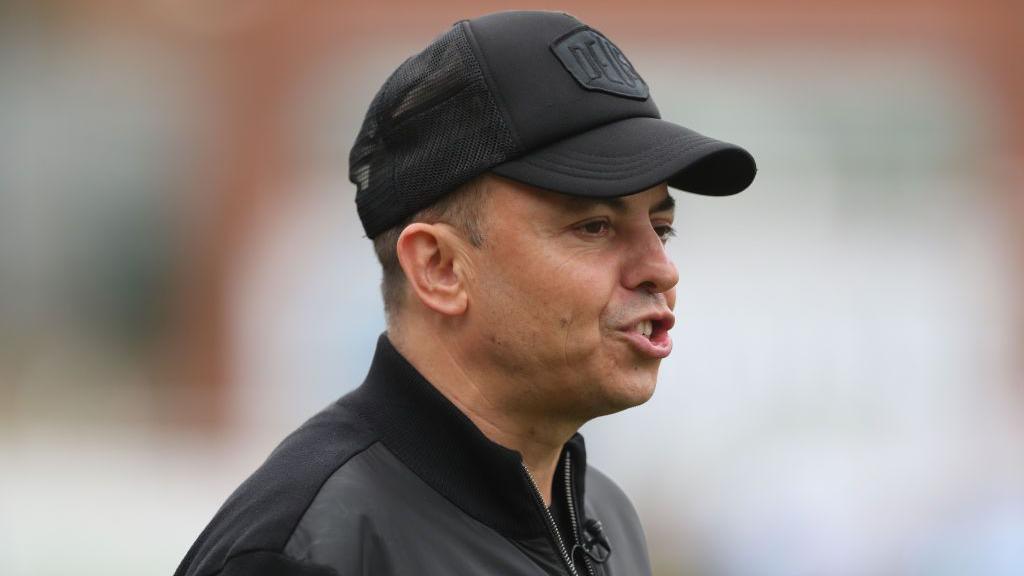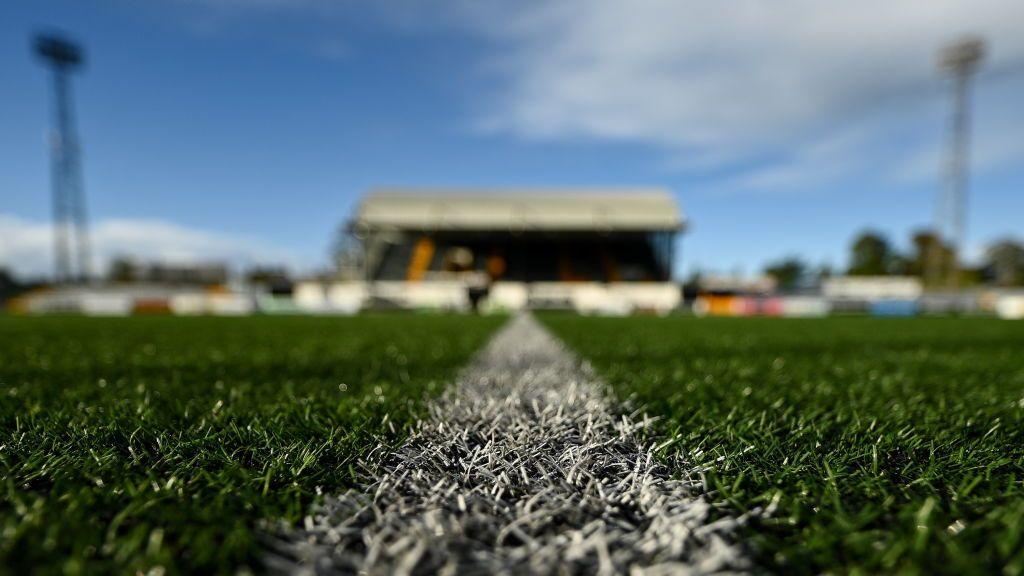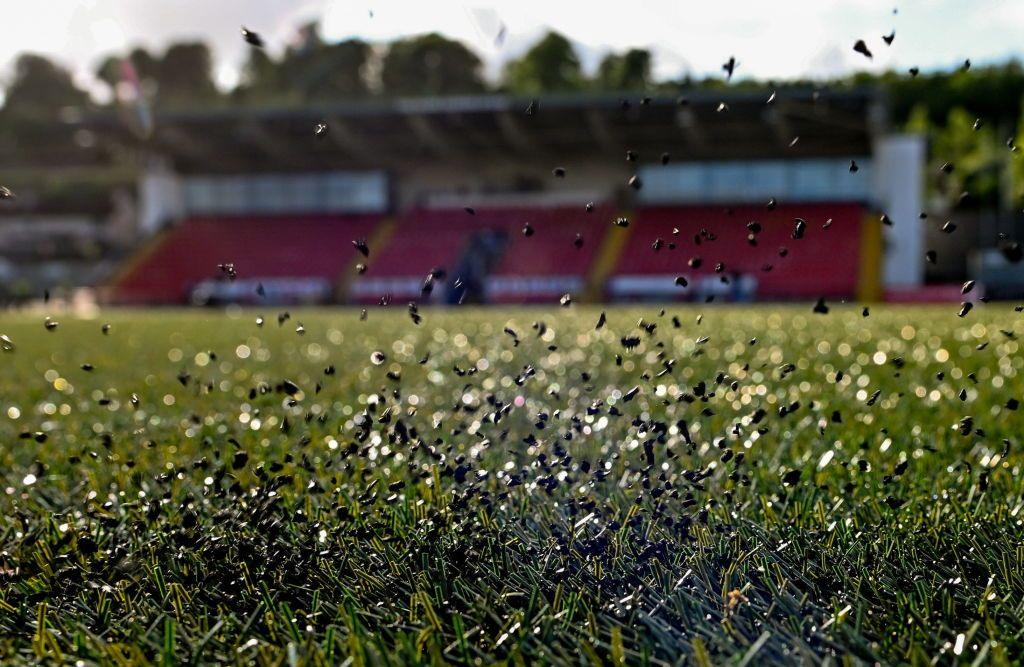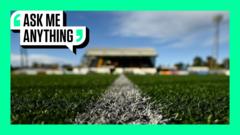Daniel Austin
BBC Sport senior journalist
Artificial football pitches – made primarily of plastic – have several significant drawbacks that make them widely unpopular at elite level.
Though the surfaces have improved dramatically since the 1980s, there is a perception of increased risk of injury, plus an impact on a team’s style of play and – more broadly – the environment.
Artificial pitches tend to be harder than real grass, which can increase the risk of injury to players.
Turning is made harder on the knees and ankles by the tougher ground, and falls can lead to heavier, more damaging impacts.
In 2022, then Roma manager Jose Mourinho blamed the surface after defender Gianluca Mancini was injured during a Europa Conference League match with Bodo/Glimt.
Tottenham visit the Norwegian side in the Europa League on Thursday.
“The thing that worries me the most is the injury for Mancini,” Mourinho said after a 2-1 defeat. “It’s something caused by playing on plastic turf.”
Manchester United defender Luke Shaw has also gone public with his criticism of artificial surfaces.
Speaking after a Champions League defeat by Young Boys in 2021, he told TNT Sport: “These pitches, they shouldn’t be possible. It’s dangerous. It’s hard to turn on.
“It’s artificial grass… you can’t turn properly… it’s not good for the knees.”
Despite the criticism from those playing and managing on the surfaces, research in the British Journal of Sports Medicine, external concluded there was no evidence of a greater risk of injury on artificial turf when compared with natural grass.
However, the pitches can lead to differences in the way the ball moves, typically rendering play slower because of increased friction.
Teams who usually play on grass pitches can have their style of play badly compromised when travelling to face a team with an artificial surface.
Why do some teams use plastic pitches?
Plastic pitches are common in Northern Europe, where cold temperatures mean maintaining true grass surfaces to a high enough standard is very difficult.
They have been banned in the professional game in England since 1998, though there are more than 5,000 across the UK at amateur level.
In Scotland they are allowed throughout the leagues, though they will be banned in the Scottish top flight from the 2026-27 season.
National League South side Dorking Wanderers have played on an artificial pitch since 2018.
And manager Marc White feels the surface has impacted on their home form. This season they won 12 matches at their Meadowbank Stadium – the same amount as they won away.
“Our home form was particularly poor this year,” White told BBC Sport. “The surface has quite a big impact on the style of football.
“The problem is the pitches have a varying degree of quality. No-one has quite worked out what a good one is.
“They are still playing around with different manufacturers and different countries. Some artificial pitches play really quickly and some really slowly. It can have a big impact on football. You don’t get the natural ball movement that you get on grass.
“We sustained a lot more injuries on the artificial pitch than we do grass. Purley down to the movement of players.”
So why do Dorking have one?
“It’s not just financial,” he said. “It’s to do with the community. There are a lack of resources across the UK for kids’ football, especially now that girls’ and ladies’ football has taken off so much.
“These artificial pitches allow for far more participation.”

Co-founder Marc White has been manager throughout Dorking Wanderers’ 25-year history
What are plastic pitches made of?
Artificial surfaces are often called ‘3G pitches’ – referencing the third generation of the technology.
The false ‘grass’ is made of stitched-together plastic fibres, typically polyethylene or polypropylene, placed on top of a base layer of rubber for shock absorption.
Sand or small crumbs of rubber made from old tyres are added between the fibres to improve grip.
In 2024, a report called for the development of plastic pitches to be halted over concerns some of the chemicals used in rubber crumbs could be cancerous. The European Commission set a target of 2031 for a ban on use of the rubber crumbs, but the UK government has made no announcement.
Professor Andrew Waterson – public health researcher at Stirling University’s faculty of Health Sciences and Sport – told the BBC: “There are so many chemicals now recognised in plastics, many unregulated, that this renders individual health and environmental risk assessments of known hazards too slow, complicated and impractical.”

Plastic pitches have faced backlash for decades in top-level football
Performance issues are not the only concern plastic pitches bring. Artificial surfaces are also considered a significant negative for the environment.
Those rubber crumbs are easily lodged in the clothing and footwear of players, as any amateur five-a-side player will attest. Those crumbs often end up either in landfill after being thrown out with household waste, or in the waterways after being flushed down drains.
There is also a significant amount of fossil fuel involved in the creation of artificial pitches, given they are made almost entirely of plastic.

Changing rooms across the country are left strewn with small black rubber crumbs after amateur matches
This article is the latest from BBC Sport’s Ask Me Anything team.
Get in touch







